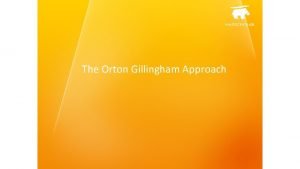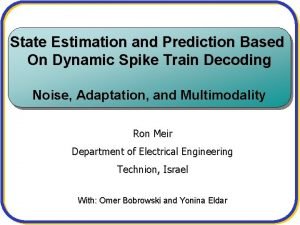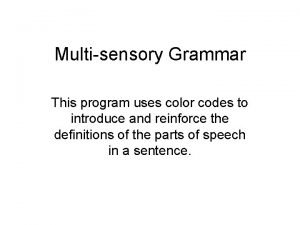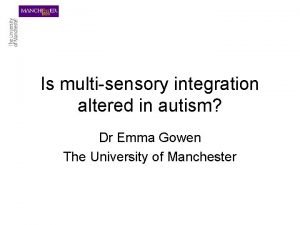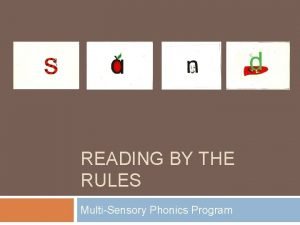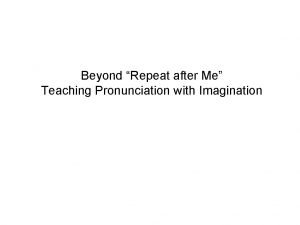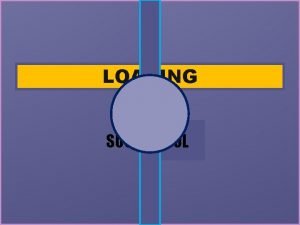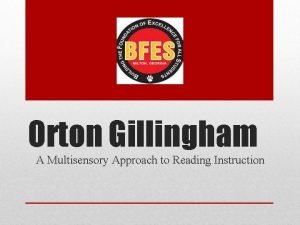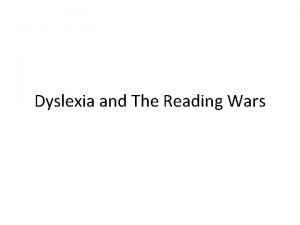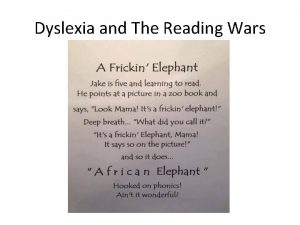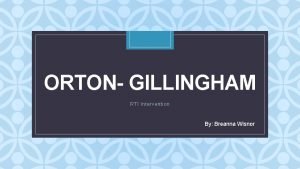Orton Gillingham A Multisensory Approach to Reading Instruction








- Slides: 8

Orton Gillingham A Multisensory Approach to Reading Instruction

The Orton-Gillingham approach was developed by neurologist Dr. Samuel T. Orton and educator Anna Gillingham at the New York Neurological Institute. Originally used to teach children with Dyslexia how to read, educators now realize that the program is applicable to all learners. The Orton- Gillingham method is a language-based, multisensory, sequential approach that teaches the basics of word formation. About Orton Gillingham

The 5 Big Ideas of Reading Instruction

Visual A learning style where ideas, concepts, and data are associated with images. Auditory A learning style where a person learns through listening. Kinesthetic A learning style in which a student learns by doing an activity that reinforces the concepts being taught. Multi-Sensory Learning

Orton Gillingham is Direct, Explicit Phonics Instruction What Is Explicit Phonics Instruction? Explicit phonics builds from part to whole. It begins with the associated sounds (phonemes) and continues with instruction of the letters (graphemes). Next, explicit phonics teaches blending the sounds into syllables and then into words. Explicit phonics is scientifically proven and research based.

Decoding and Encoding Words Explicit phonics instruction is presented in a sequential format which provides students with consistent practice that allows them to encode (spell) and decode (read) words. Encode: The process of converting sounds into letters: speech to print (spelling a word) Decode: The process of converting letters into spoken sound: print to speech (reading a word)

What are nonsense words? Words that do not have any meaning. Why do we use nonsense words in reading? 1. To see if a child knows the most common sounds for the letters. 2. To see if a child can blend the letters together to form words. Real words cannot be used because there would be no way of knowing whether the child is recognizing the word by sight, therefore, we are not isolating the skills that we wish to assess. Nonsense words

Red Words : Non-Phonetic Words There are two types of words in our language - words that are phonetic and can be sounded out and words that do not follow the rules and cannot be sounded out. . . these words are the “rule breakers”. Red words are “red “because it is warning color that tells students to stop decoding and use their prior knowledge and/or memorization techniques. Examples of red words: was, of, come, been, once, said, Red words are learned through a multisensory approach
